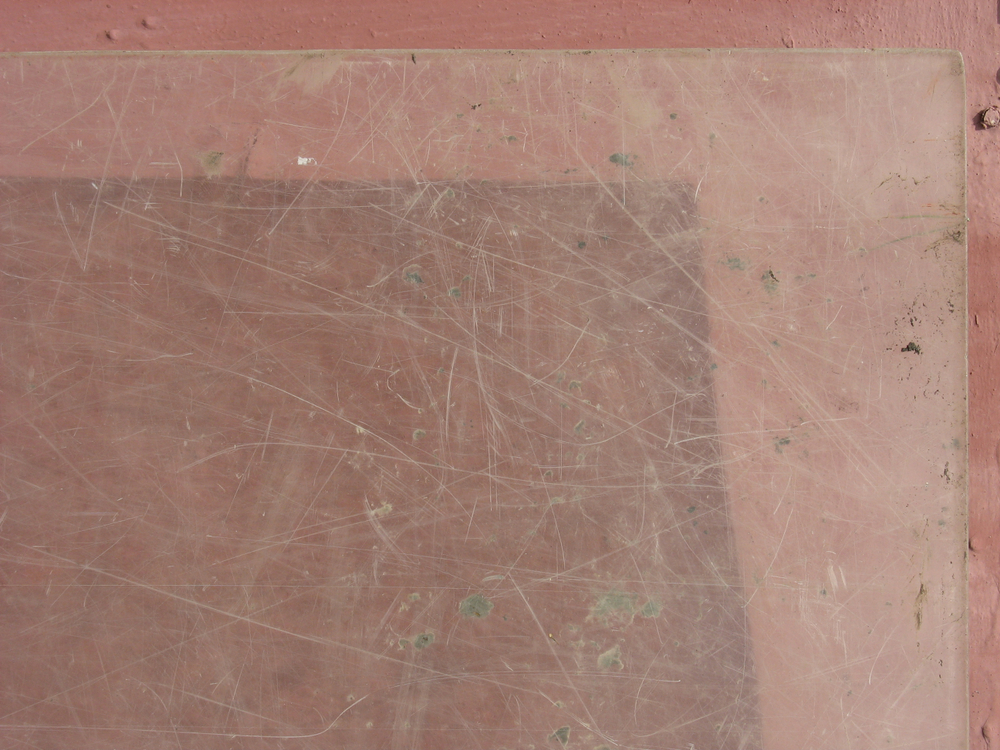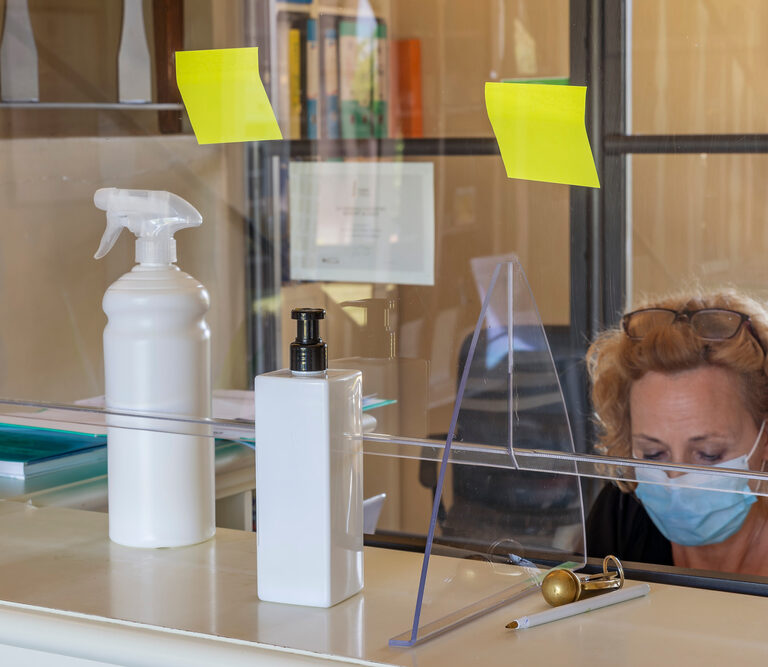Want to know how to clean plexiglass? Or how to maintain it? Or how to remove scratches from your plexiglass? In this article, we’ve covered it all. We’ve brought you lots of information, facts, pro-tips, hacks and more – read on for shiny, dirt-free, scratch-free plexiglass.
What Is Plexiglass?
Before we move on to cleaning plexiglass, let’s first work out what plexiglass is (just to make sure you’re cleaning the right thing).
The first thing to know is that plexiglass isn’t really glass.
Confused? Don’t be; plexiglass is actually made of acrylic, a petroleum-based thermoplastic, but I won’t bore you with the details. Plexiglass is often used in place of glass because it’s lighter, near-shatterproof, versatile, more transparent, and it’s easy to make and use.
If it looks like glass but feels like plastic, it’s probably plexiglass.
How to Clean Plexiglass – Our Very Simple Method
Now that we’ve cleared that up, let’s clean it up. Here’s how to clean your plexiglass, no matter how dirty it might be…
Step 1 – Blow
Blow over the surface of the plexiglass to get rid of as much dust, dirt and debris as you can. If you like, you can use a hairdryer, but use the coldest (but blowiest) setting possible, as heat is terrible news for plexiglass.
If there’s any particularly sturdy debris, use a canister of compressed air instead.
It’s best to remove as much dirt and debris as you can during this stage – if you apply a cloth on top of debris, dirt and dust, you might push it into your plexiglass, causing damage, scratches and irreparable marks.
Step 2 – Spray and Wipe
Get yourself a mild, gentle, non-abrasive cleaner. Something specifically designed for plexiglass is always best, as (and we’ll touch upon this in detail later) plexiglass is very delicate, so you need to treat it right. Something like Novus Plastic Clean and Shine is an excellent solution.
If your plexiglass only needs a very mild clean, consider using a mixture of warm water and mild dish soap. Even plain old warm water in a spray bottle alone can sometimes do the trick.
Next up, get a microfiber cleaning cloth (something like this MR. SIGA cloth is great), dampen it, and use the cloth to gently and carefully wipe over the area you’ve sprayed. Be careful to only wipe the areas you’ve sprayed, as dry cloths can damage plexiglass.
Don’t be too rough, as you might damage or scratch your plexiglass – for this job, it’s better to take things slowly and patiently. Make sure your cloth is wet or damp the whole time.
If you have particularly dirty plexiglass, you might need to go through several cycles of the above, as one application won’t be enough. Do another, then another, and as many as it takes to get your plexiglass clean. Persevere and be persistent – don’t be tempted to go for a more hardcore cleaning solution instead, as that’ll probably damage your plexiglass.
We’ve included more pro-tips on what you shouldn’t do later in this article.
Step 3 – One Final Watery Wipe
Give your plexiglass one final wipe with some plain old water, which should give it even greater shine. This will also help to wipe away any remaining cleaning solution, and any other small areas you might have missed.
Step 4 – Blot Dry
If you leave your plexiglass to dry naturally, you’ll be left with some small streaks. That might not bother you at all, but if you’re a perfectionist, you might want to dry your plexiglass to rid yourself of these streaks.
If you do decide to dry your plexiglass, grab another (dry) microfiber cloth. But don’t rub your cloth over the plexiglass – as we’ve mentioned, this might cause scratches. Instead, you should blot it dry gently and patiently.
The more regularly you clean your plexiglass, the less dirty it will become, and the quicker the process will get. If you clean your plexiglass every week or two, it becomes a 5-minute job!
How to Get Scratches out of Plexiglass

To avoid getting scratches on your plexiglass, you need to clean it carefully and gently.
But if you already have scratches in your plexiglass, car wax is your friend. Alternatively, you could also try using Novus Fine Scratch Remover. Whatever you decide to use, here’s how to remove scratches from your plexiglass:
Grab a soft microfiber cloth, dampen it, and apply your chosen buffering agent. Gently but firmly buff your plexiglass for around 30 seconds, before checking it to see if you’ve managed to remove any scratches. If your plexiglass is badly scratched, you might need to do this many times – but with enough persistence, you should be able to remove all but the deepest scratches.
If you have very deep scratches, it’s usually impossible to get them out without the help of a professional. Unless you’re comfortable scraping, sanding and dismantling your plexiglass, it’s best just to leave big scratches alone.
Got scratches in your stainless steel appliances, counters and cabinets? We can also help with that.
How Not to Clean Plexiglass – Things You Shouldn’t Use
As we’ve outlined, cleaning plexiglass is simple and easy. But because of the way plexiglass is built, there are lots of things you shouldn’t use to clean it. They are:
The Four A’s
- Alcohol: alcohol can ruin your plexiglass by causing cracks and fractures in it. Try to avoid using cleaning products with any amount of alcohol, no matter how little.
- Abrasives: abrasives (as the name implies) are all pretty rough, and plexiglass is a delicate little creature. Avoid using products such as household bleach, powdered cleaners, and anything with bleaching agents.
- Ammonia: if you use a cleaning product with ammonia, you’ll leave your plexiglass looking hazy and cloudy. Ammonia can ruin and corrode plexiglass, and stop it from ever again looking sleek and shiny.
- Aromatics: if something is heavily scented, it might damage your plexiglass, as plexiglass likes to absorb scented solutions. Use scent-free solutions instead.
Generic Cleaners
- Normal glass cleaners: these often contain ammonia, so they’re terrible for plexiglass. Don’t use stuff like Windex. That said, glass cleaners are of course great for cleaning real glass, and they can help massively with cleaning your windows.
- All-purpose cleaners: they might purport to be all-purpose, but they’re not really all-purpose. All-purpose cleaners are often too harsh for plexiglass.
Physical Abrasives
- Dry stuff: don’t wipe over your plexiglass with dry cloths or your dry hands, as you might scratch and smear the surface. Using dry things to wipe your plexiglass can also push dirt, dust and debris into the surface of the plexiglass, causing scratches and damage.
- Abrasive brushes: stuff like steel wool, paper towels and brushes will leave scratches on your plexiglass.
Plexiglass, despite its massive usability and versatility is (as you’ve probably now noticed) pretty delicate and sensitive, so it’s important you stay away from all the bad stuff in this section. Stick strictly to the method we’ve outlined earlier in this article, and you’ll keep your plexiglass shiny, sparkling, glistening, and without any stains, scratches or haziness.
Benefits and Uses of Plexiglass
Plexiglass is used for all types of things, including showers, baths, casings, protective barriers, windows, greenhouse panels, solar panels, furniture, screens, lights, signs, boxes, skylights, aquariums and loads more. It’s often used in airplanes, cars, submarines and stadiums too.
Broadly speaking, you can find plexiglass everywhere, because of its many benefits. The main benefits of plexiglass include:
- No glare: glass is notorious for glare, causing squinting, headaches and shiny patches the world over. Plexiglass removes this problem by being entirely glare-free, making it excellent for use in retail screens, displays, cabinets, frames and more.
- Shatterproof: even when cracked, plexiglass will rarely completely break. Traditional glass is easy to shatter, while plexiglass is almost impossible to shatter. Compared to traditional glass, plexiglass is around 17 times more shatterproof.
- It’s cheap and easy to make and install, which is helpful for churning out large quantities of the useful stuff. It’s also very lightweight, making it much easier to create, handle and move than traditional glass.
Final Thoughts
There you have it – everything you need to know about keeping your plexiglass clean, transparent and scratch-free. Cleaning and maintaining plexiglass is easy, simple and affordable if you know how – and now you do!
Want any more DIY tips, hacks or help? Stick with us – we’ve got everything you need to know right here on our site.
